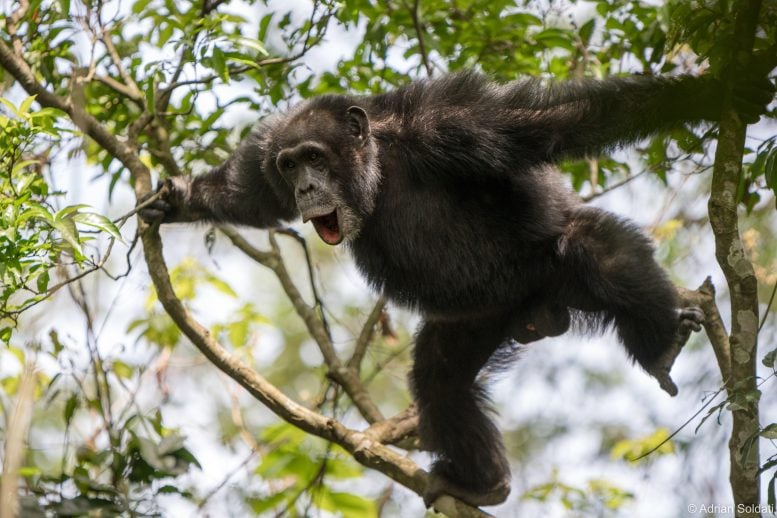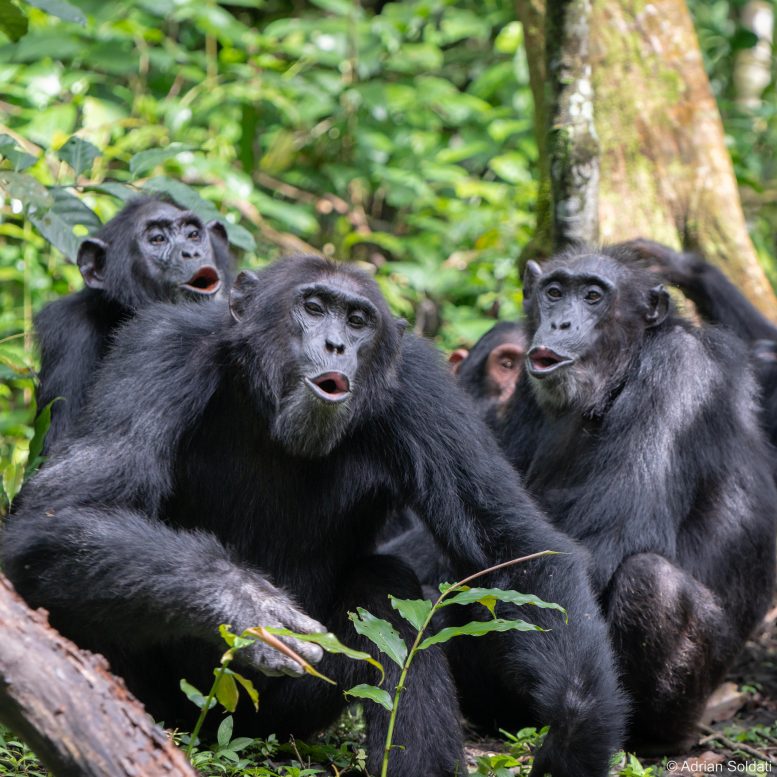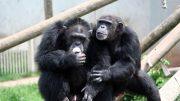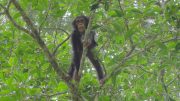
Chimpanzees are known to produce a number of different vocalizations and combine these calls into larger sequences. Credit: Adrian Soldati
Chimpanzees, like humans, have the capacity to combine vocalizations to create larger, meaningful forms of communication. According to UZH researchers, this capability could be even more ancient in evolutionary terms than previously assumed.
The ability to merge words into larger, meaningful phrases is a fundamental characteristic of human language, where the significance of the entire phrase is connected to the meanings of its constituent parts. However, the origins and evolutionary development of this ability remain unclear.
Chimpanzees, our closest living relatives, are known to produce a number of different vocalizations to manage their social and ecological lives and, under some circumstances, combine these calls into larger sequences. By conducting careful, controlled experiments with wild chimpanzees in Uganda, researchers from the University of Zurich (UZH) showed that these combinations are understood by chimpanzees.
Chimpanzees react most strongly to call combinations
“Chimpanzees produce ‘alarm-huus’ when surprised and ‘waa-barks’ when potentially recruiting conspecifics during aggression or hunting,” says Maël Leroux, a postdoctoral student at the Department of Comparative Language Science of UZH, who led the study. “Our behavioral observations suggest that chimpanzees combine these calls when exposed to a threat where recruiting group members is advantageous, such as when encountering a snake, but until now experimental verification has been missing.”

Group of chimpanzees. Credit: Adrian Soldati
The researchers presented chimpanzees with model snakes and were able to elicit the call combination. Critically, chimpanzees responded strongest to playbacks of the combination than when hearing either the “alarm-huu” or “waa-bark” alone.
“This makes sense because a threat that needs recruitment is an urgent event and suggests listening chimpanzees really are combining the meaning of the individual calls,” adds study last author and UZH professor Simon Townsend.
Primate roots of compositionality
An important implication of the new findings is the potential light they can shed on the evolutionary roots of language’s compositional nature.
“Humans and chimpanzees last shared a common ancestor approximately 6 million years ago. Our data, therefore, indicate that the capacity to combine meaningful vocalizations is potentially at least 6 million years old, if not older,” says Townsend. “These data provide an intriguing glimpse into the evolutionary emergence of language” added Leroux. In a nutshell, it points towards compositionality originating prior to the appearance of language itself, though follow-up observational and experimental work, ideally in other great ape species, will be central to confirming this.
Reference: “Call combinations and compositional processing in wild chimpanzees” by Maël Leroux, Anne M. Schel, Claudia Wilke, Bosco Chandia, Klaus Zuberbühler, Katie E. Slocombe and Simon W. Townsend, 4 May 2023, Nature Communications.
DOI: 10.1038/s41467-023-37816-y









Be the first to comment on "The Evolution of Communication: Chimpanzees Show Surprising Ability To Combine Calls"